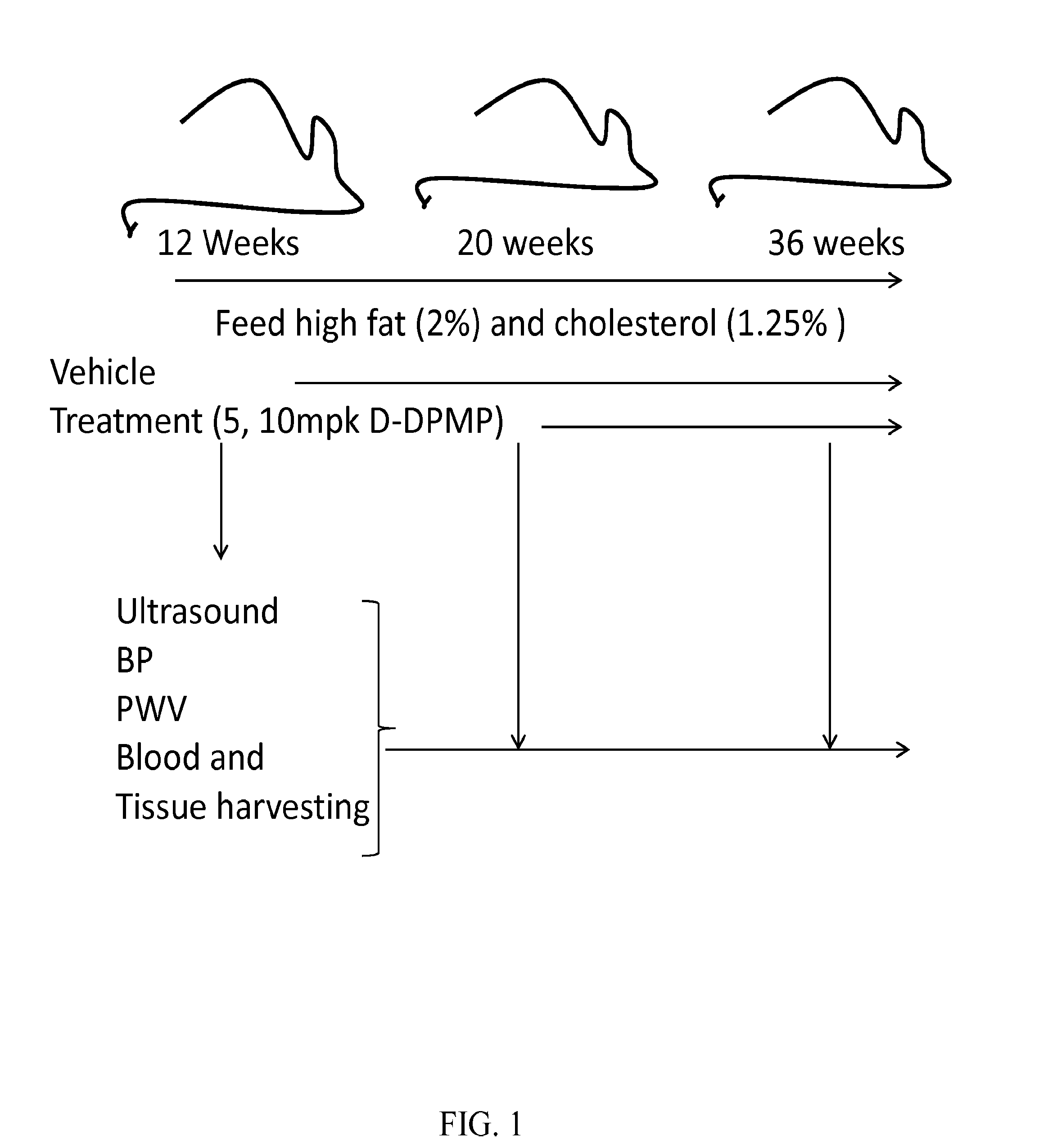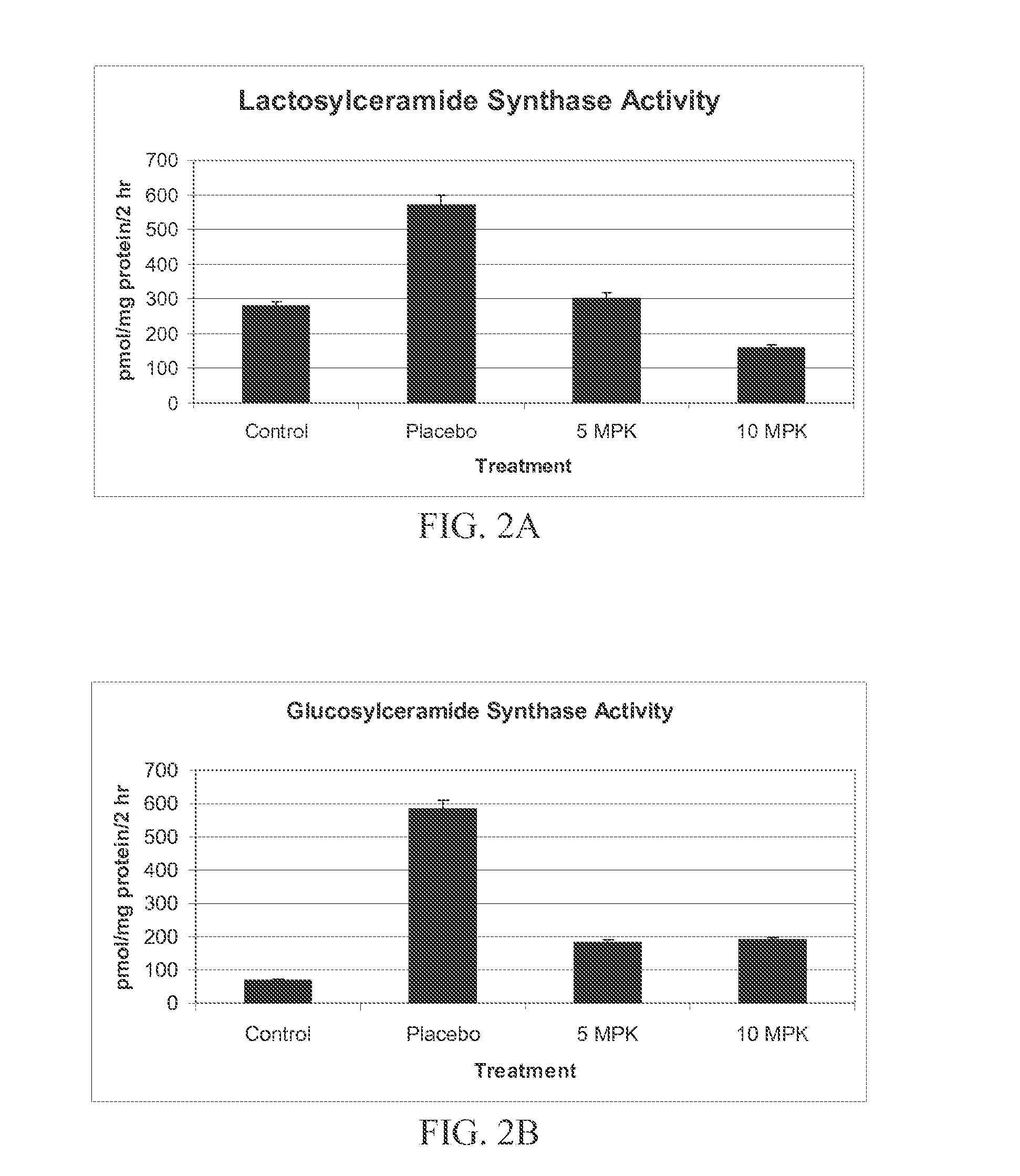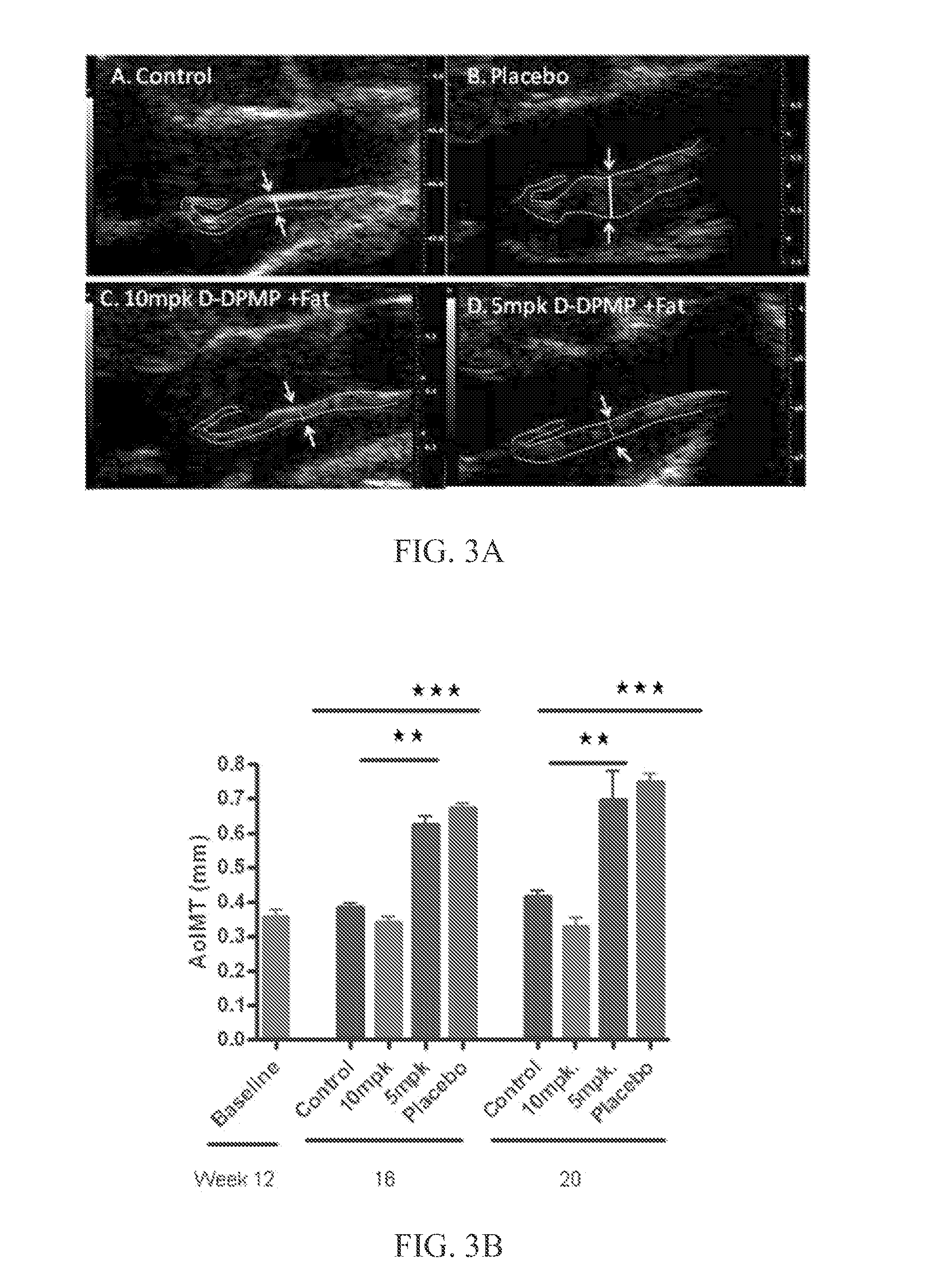Compositions and methods for treating cardiac hypertrophy
a technology applied in the field of compositions and methods for treating cardiac hypertrophy, can solve the problems of cardiac hypertrophy, cardiac hypertrophy, heart failure, sudden death, morbidity and mortality, etc., and achieve the effects of reducing the risk of cardiac hypertrophy, and improving the quality of li
- Summary
- Abstract
- Description
- Claims
- Application Information
AI Technical Summary
Benefits of technology
Problems solved by technology
Method used
Image
Examples
example 1
To Determine the Efficacy of D-PDMP in Preventing Atherosclerosis and Cardiac Hypertrophy in apoE− / − Mice
[0228]A high fat (2%) and cholesterol (1.2%) diet (Research diet) was fed to apoE− / − mice, w / o D-PDMP (5,10 mpk) for 12, 20, and 36 weeks. As described below, the hyperlipidemic diet in Apo E− / − mice significantly increased vascular wall thickening, accumulation of atherosclerotic plaque along the bifurcation of the aortic branch and aortic root area, decreased cardiac contractility, increased left ventricle hypertrophy (LVH) and fibrosis and showed a marked increase in a PWV independent of blood pressure. Interestingly, mice treated with 10 mpk of D-PDMP exhibited significantly clear arterial wall area, decrease in cardiovascular wall thickening and fibrosis and improved cardiac contractility and reduces arterial stiffness (PWV) compared to mice treated with 5 mpk of D-PDMP and placebo. Measurement of several glycolipid glycotransferases showed that feeding a hyperlipidemic diet...
example 2
Prevent of Cardiac Hypertrophy in apoE− / − Mice Fed Western Diet and C57Bl-6 Mice Subject to Trans-Aortic Constriction by Inhibiting Glycosphingolipid Synthesis
[0244]Nearly one in three persons world-wide is afflicted by high blood pressure. In response to this increase in blood volume, stress and pressure, the cardiomyocytes in the left ventricle in the heart increase Ca2+ by recruiting transient receptor potential channels and / or sodium-hydrogen exchanger-1. Both angiotensin-1 and endothelin-1 are proteins that cause vasoconstriction and thus raise blood pressure. Other studies point at extra cellular signal related kinase-1 (ERK-1) / p44 mitogen activated protein kinase (MAPK) which has been implicated to activate the sodium hydrogen exchanger-1(NHE-1). However, nothing is known about the role of glycosphingolipid glycosyltransferases and glycosphingolipids in cardiac hypertrophy.
[0245]We have previously shown that diverse growth factors, pro inflammatory cytokines such as tumor nec...
example 3
[0273]Determine the Long-Term (36 weeks) Effect of Treating the apoE− / − Mice with D-PDMP (5 and 10 mpk) on the Cardiovascular Parameters Above
PUM
| Property | Measurement | Unit |
|---|---|---|
| pH | aaaaa | aaaaa |
| pH | aaaaa | aaaaa |
| Tm | aaaaa | aaaaa |
Abstract
Description
Claims
Application Information
 Login to View More
Login to View More - R&D
- Intellectual Property
- Life Sciences
- Materials
- Tech Scout
- Unparalleled Data Quality
- Higher Quality Content
- 60% Fewer Hallucinations
Browse by: Latest US Patents, China's latest patents, Technical Efficacy Thesaurus, Application Domain, Technology Topic, Popular Technical Reports.
© 2025 PatSnap. All rights reserved.Legal|Privacy policy|Modern Slavery Act Transparency Statement|Sitemap|About US| Contact US: help@patsnap.com



